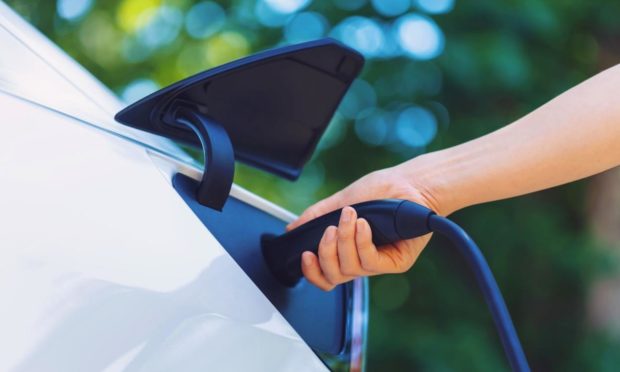Hundreds of times more electric vehicles will be on the roads in the next 30 years, according to a new report.
It is predicted that by 2050 the number of battery electric vehicles (EVs) in the Granite City could accelerate from around 350 today to 124,500.
Over the same period, the number in the Highlands could increase from around 500 to more than 130,000.
Scottish and Southern Electricity Networks (SSEN) Distribution has published Distribution Future Energy Scenarios, which examines the impact of a net zero future on its network in the north of Scotland.
Across its area, from the southern borders of Perth and Kinross, Dunblane and Loch Lomand, to the north coast and islands, there are currently 3,065 battery cars – some 0.3% of all vehicles.
It is predicted this figure will increase by about 270 times, to more than 825,000, by 2050.
The report says the UK Government’s commitment to ban the sale of petrol and diesel engine vehicles by 2030 has increased the certainty of growth in electric vehicles.
It also forecasts huge increases in the number of heat pumps in domestic and commercial properties and significant rises in renewable energy generation over 30 years.
Scottish Greens Highlands and Islands MSP John Finnie said: “We need to change how we power our journeys and heat our homes if we are serious about tackling the climate emergency, so it is good to see this report recognise some of the challenges and opportunities.
“An increase in vehicle charging points is essential, but so too is investment in decarbonising public transport, and making that a viable option for communities, particularly in rural areas.
“Supporting councils to run their own bus companies could play an important role here.
“These interventions will create thousands of quality green jobs, and there’s also huge scope to increase community decision making; giving people a far greater say in what projects work best for their own area.”
The new report, undertaken by sustainable energy experts Regen, uses four national energy scenarios from National Grid’s future energy scenarios as a framework.
The study forecasts that by 2050 Aberdeen will have a rise in heat pumps from around 100 today to over 115,000; the Highlands from just under 4,000 to more than 103,000; and a 5,000% increase from around 13,000 to 650,000 across the north of Scotland.
In addition, the research says 8.8GW of local renewable generation will be connected to the distribution network across the north of Scotland, including solar, wind, hydro and marine by 2050 – an increase of more than 285% from just over 3GW in 2019.
Solar panel capacity alone is due to increase by 590%, from 75MW today to 517MW in 2050.
That includes a rise in Aberdeen, from 4MW today to 65MW. Capacity in the Highlands would rise from 15MW to 93MW.
Andrew Roper, SSEN’s distribution system operation director, said: “This report is a valuable tool in informing and supporting the communities we serve transition to net zero in a secure and cost-effective manner.
“This will mean a significant increase in EVs on the roads which will require charging infrastructure, heat pumps in our homes and small-scale renewables on our roofs.”
Ray Arrell, Regen’s head of technical development, said the analysis reflects the unprecedented rate of change within the UK electricity system.
He added: “Already we have seen a massive shift in generation towards renewable energy technologies. This is set to continue and will further drive down the carbon intensity of electricity, which will in turn enable the decarbonisation of transport and heat with the rapid adoption of electric vehicles and heat pumps.”
